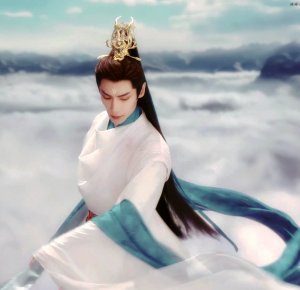
Everything in this drama is perfect
The first few episodes of "Till the End of the Moon" can be described as straight to the point. The high-energy scene of Mo Shen Dantai Jin's killing spree begins immediately after the opening, and after the stunning special effects, the story quickly moves into a plot of reversing the future. In just a few episodes, the female lead has already taken the main storyline and is working hard to save the people."Watched 18 episodes in a row and caught up with the latest update, didn't even stop for a breath," "The special effects are really good. After watching the first episode, I really want to praise the production team." The fast-paced story and the special effects that exceed expectations have received high praise from many viewers and they have started saying "It's really good!"
This market has never lacked Xianxia dramas, but only "good-looking Xianxia dramas". As the conflict between users' demand for good content and the inevitable content homogenization intensifies, innovation becomes more urgent. "Till the End of the Moon" uses a narrative technique that counters homogeneity, rich and diverse character settings, and a redefined value system of chivalry to redefine the boundaries of innovation in Xianxia dramas.
The main characters in "Till the End of the Moon" all have multiple identities and span several lifetimes. The screenwriters take advantage of the natural complexity of character in Xianxia dramas and, through the characters' experiences, make their "human" and "non-human" sides more three-dimensional and make their humanity more vivid. For example, the male lead, Dantai Jin, is the most complex character, he is evil but reasonable, and good things come naturally to him. Viewers can see his struggles and vulnerabilities, and they naturally develop emotional resonance.
Despite the claim of upholding the chivalrous spirit of the wuxia genre, many wuxia dramas in recent years have drifted towards idol dramas. Fortunately, in "Till the End of the Moon", we see a comprehensive return of the "chivalrous" spirit. From the worldview-based spirit of chivalry and salvation to the concrete expression in the main plot and character settings, the "chivalrous spirit" runs throughout the entire series. According to the screenwriters He Fang and Luo Xuan, the highlight plot of "Twelve Godly Powers vs. Demon God" in the drama is not only a piece of history familiar to disciples of the immortal sect, but also a spiritual value that continues in the main story thousands of years later, whether it is the demon god Dan Taijin in the darkness, or the chivalrous woman Li Susu who pursues the light, or even the loser Ye Zeyu, all have a sense of chivalry in their hearts.
From the moment "Till the End of the Moon" was first announced, praises about its artistic style and costume texture have never stopped. Why is it so eye-catching? Because it is truly beautiful.
In the past, we seldom used "rich and magnificent" to describe a wuxia drama. Previously, the protagonists in wuxia dramas wore large swathes of white, with their appearances ranging from simple to monotonous, and their costumes were repetitive, making it effortless for wuxia drama audiences to mix them up. However, after seeing the magnificent composition and color matching of "Till the End of the Moon" materials, and the Dunhuang-style costume and appearance of the entire cast, such bold aesthetic innovation is not only unique to "Till the End of the Moon" "TTEOTM aesthetics", but also the most intuitive difference between it and most other wuxia dramas.
Art design is also an essential aspect of the "TTEOTM aesthetics." After repeated polishing by art director Luan Hexin and director Ju Jueliang, they finally settled on a design style that puts people first, with a combination of Eastern mystical colors and humanistic emotions. Behind the scenes, it involved using 12 studios, covering nearly 50,000 square meters, and creating a huge amount of props, with nearly 30,000 props used in the entire show. Just for the overall design of the male and female lead's costumes, there were hundreds of props.
During the filming process, to make the immortal world more grounded, the creators referenced the design philosophy of Dunhuang culture and Tang and Song dynasty architecture. They also spent nine months building real-world sets in Yongkang City, Zhejiang Province. In the creation of the human world divine realm's architecture, they also incorporated traditional Chinese medicine-inspired patterns, combining historical elements while retaining the mystical feel of the fantasy genre. The fantasy style that extends from real-world scenes makes the design of the four realms more realistic and dynamic.
With close collaboration and communication between departments, from content to styling and art, the aesthetic design of "Till the End of the Moon" presents a highly integrated and cohesive look. The design concept that is rooted in oriental culture and centered around people not only realizes an innovative exploration of aesthetics in the genre of xianxia drama, but also sets a new benchmark for the eastern aesthetics of xianxia dramas.
Putting people first and breaking through the conventional creative process to amplify content advantages reflects the resolute spirit of the creative team. As a xianxia drama that is deeply rooted in Chinese traditional culture, it embodies the classic eastern aesthetics through concrete actions and refreshes the audience's inherent perception of xianxia, creating a broader space for imagination.
Was this review helpful to you?




